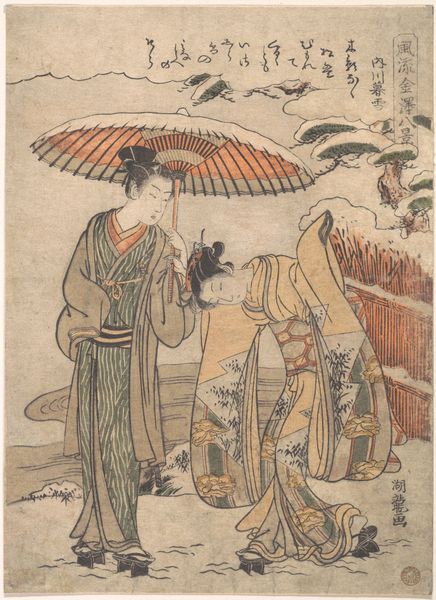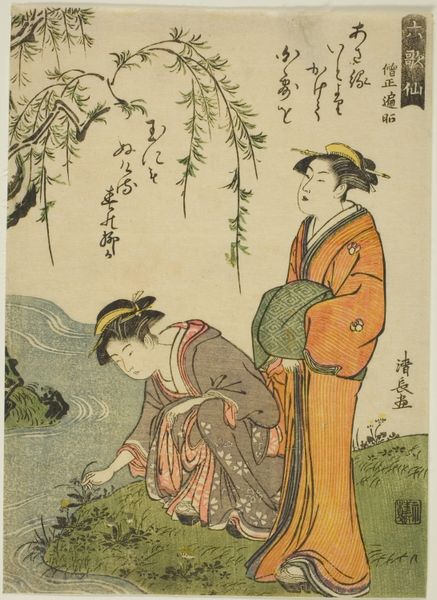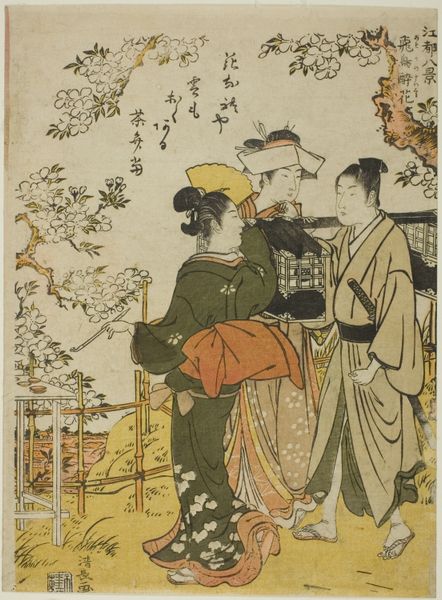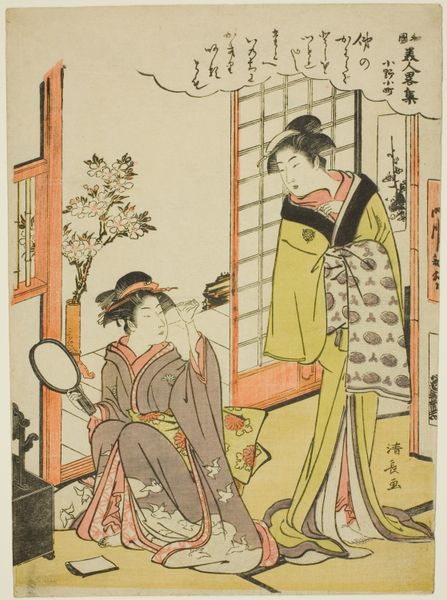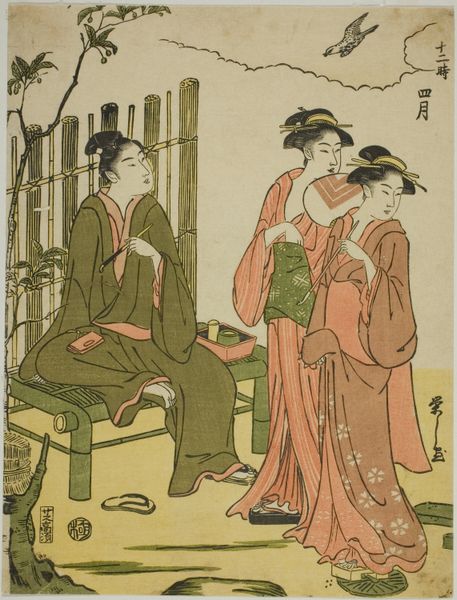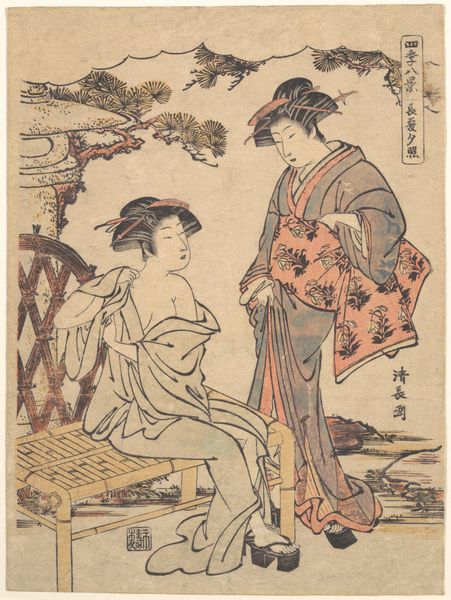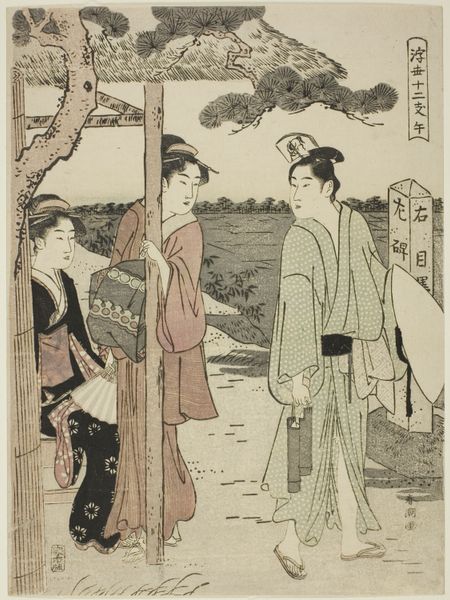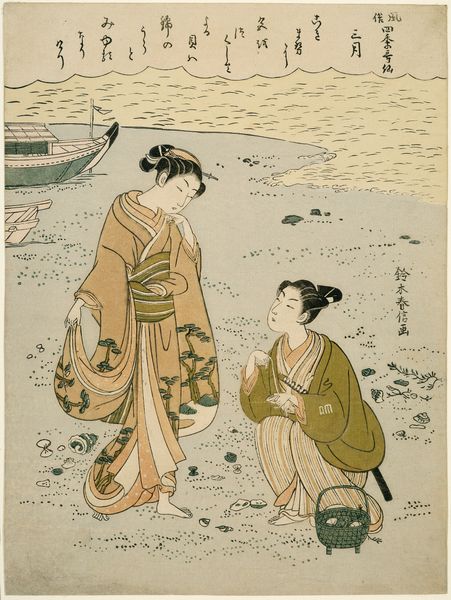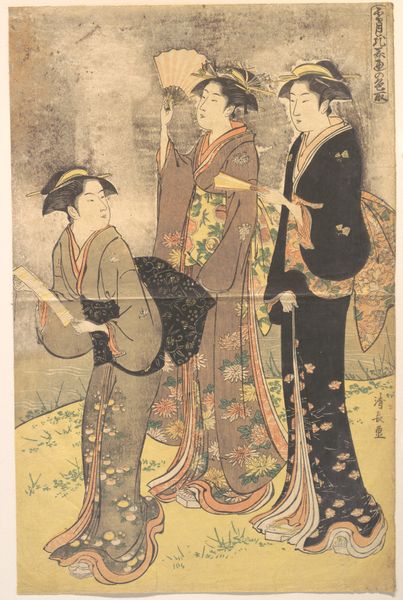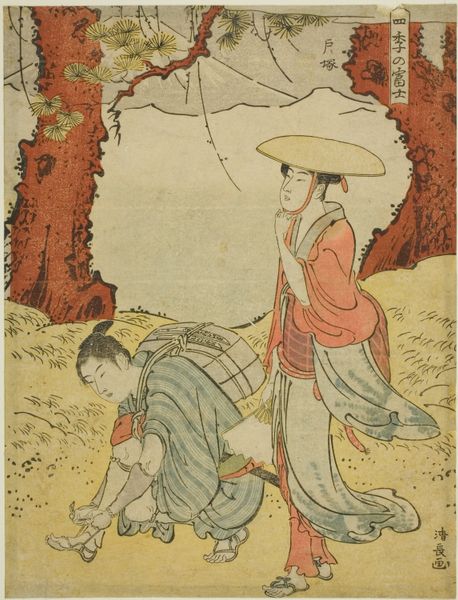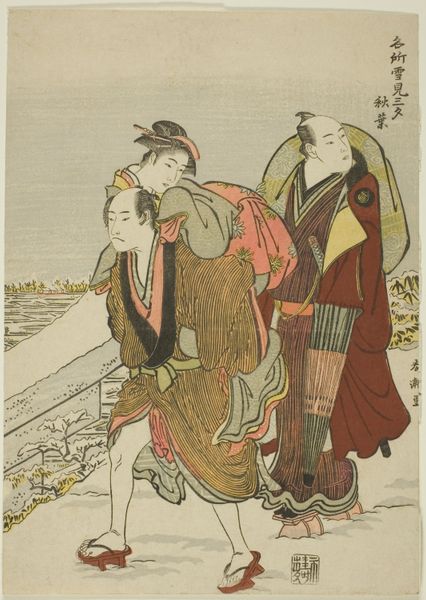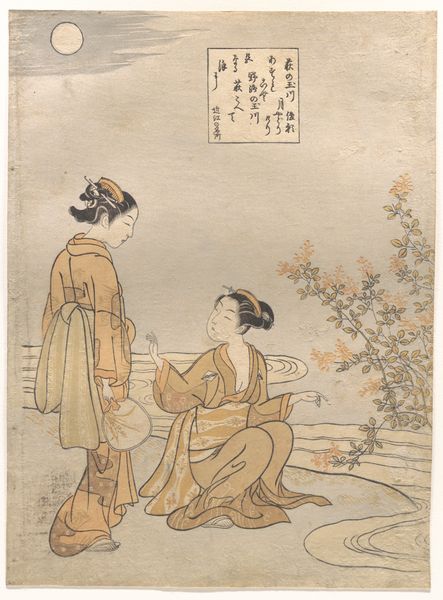
Enoshima, from the series "Mount Fuji in the Four Seasons (Shiki no Fuji)" c. 1785
0:00
0:00
print, woodblock-print
#
portrait
#
ink painting
# print
#
asian-art
#
landscape
#
ukiyo-e
#
japan
#
figuration
#
woodblock-print
Dimensions: 25.7 × 18.9 cm
Copyright: Public Domain
Curator: Looking at this print, "Enoshima, from the series 'Mount Fuji in the Four Seasons,'" circa 1785, made by Torii Kiyonaga, I'm immediately struck by the texture and patterns in the women's kimonos. The contrasting lines really make the print engaging. Editor: Indeed. Kiyonaga worked during a fascinating period. Think about the Edo period’s strict social hierarchies and the floating world of the ukiyo-e tradition, which both influenced art production. The woodblock print itself—how it’s made, who made it, and for whom—is key here. We see labor embodied in these meticulous lines. Curator: I agree, the labor is visible. Kiyonaga's "Enoshima" feels both serene and subtly observant. These are probably middle-class women on an outing, carefully crafted for consumption. There is also the landscape, not just decoration but part of everyday social spaces, perhaps mirroring society at large. Editor: Right, woodblock printing democratized art in a way. Multiple impressions allowed for wider distribution. Consider the materiality of the paper, the inks—produced and consumed within a specific economy. The popularity of series, like “Mount Fuji in the Four Seasons” indicates a thriving print market. The availability impacted society and individual experiences as it became available to larger consumer bases. Curator: What draws my attention, though, is Kiyonaga’s composition. Look how he has depicted Mount Fuji distantly. A sacred landmark becomes almost background to daily life. It suggests the changing perception of traditional icons during the period. It feels radical when taken in the context of historical Japan. Editor: Well, the placement of Mt. Fuji raises questions. What political message is present, and does Kiyonaga intend to promote this space to specific social classes? Did Kiyonaga attempt to elevate popular taste, or did he aim to satisfy market demand? How does an artist like Kiyonaga function in an industry shaped by institutions and public desire? Curator: These are such great perspectives. It brings to focus both how this beautiful print reflects life as a whole, both as material good and social icon, and shows how it functions as art. Editor: Exactly. And understanding those layers transforms how we perceive it—not just a pretty scene but a complex intersection of craft, economy, and social commentary.
Comments
No comments
Be the first to comment and join the conversation on the ultimate creative platform.

